25 influential women artists of the 20th century
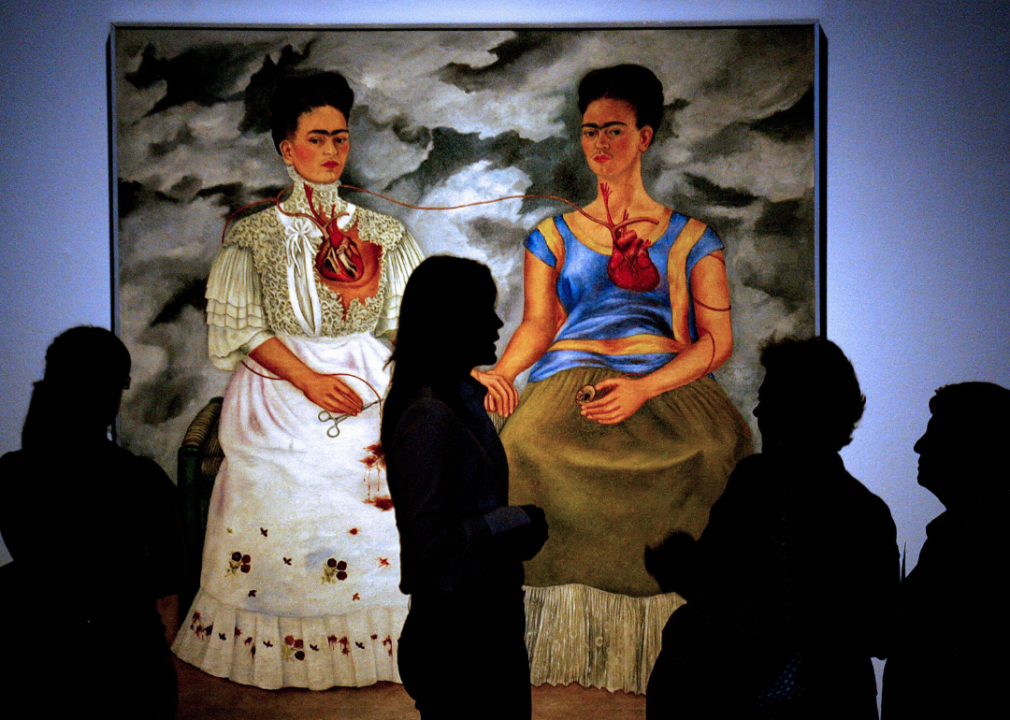
ALEJANDRO ACOSTA/AFP via Getty Images
25 influential women artists of the 20th century
Ask anyone to name a famous artist and you’ll probably hear the same names repeated over and over again: Da Vinci, Picasso, Monet, Degas … the list goes on and on. What you’re not likely to hear? A woman’s name.
This is despite the fact that women make up more than 50% of currently working visual artists. Like every other field, there’s a gender gap—and certainly a pay gap—in the world of fine arts. Women aren’t given the recognition their work commands and often find their work relegated to backrooms and secondary galleries rather than hung alongside the art of their male counterparts. Art museums and galleries have begun to realize the problem, and many are actively working to correct it, but change doesn’t happen overnight. Many female artists are still unknown despite creating literal industry-changing masterpieces.
Stacker has compiled a list of 25 female artists from the 20th century you should know. Using art encyclopedias and museum websites, it has curated a list of women who have influenced the art world in a number of ways. From creating new styles, like abstract art, to inspiring political movements, like the Black Women’s Movement, these powerful ladies are every bit as talented and important as the men with whom they share gallery space.
You may also like: The most popular book the year you were born
![]()
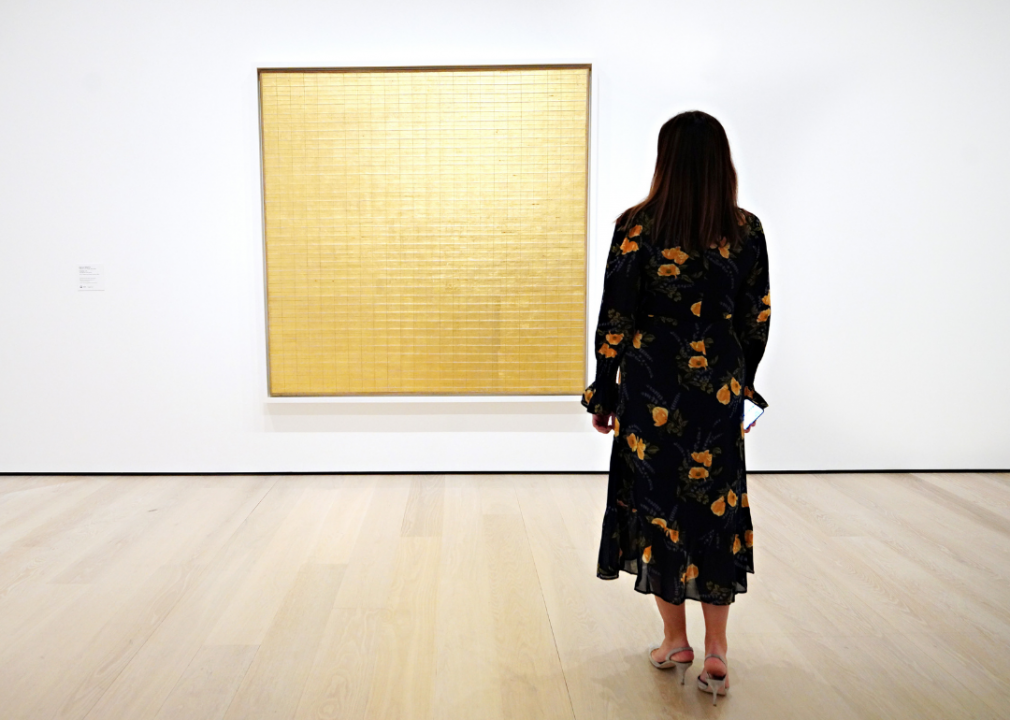
Cindy Ord // Getty Images
Agnes Martin
One of the most important painters of her generation, Agnes Martin was an abstract artist who created minimalistic paintings driven by her transcendentalist and Buddhist beliefs. Moving to the United States from Canada at a young age, she spent the rest of her life flitting between New Mexico and New York, occasionally disappearing completely from the art scene before returning with a slightly shifted style. In 2004, she died in New Mexico.
[Pictured: Agnes Martin’s ‘Friendship’ is on display during a press preview of MoMA’s first ever Fall Reveal at Museum of Modern Art on Nov. 13, 2020 in New York City.]
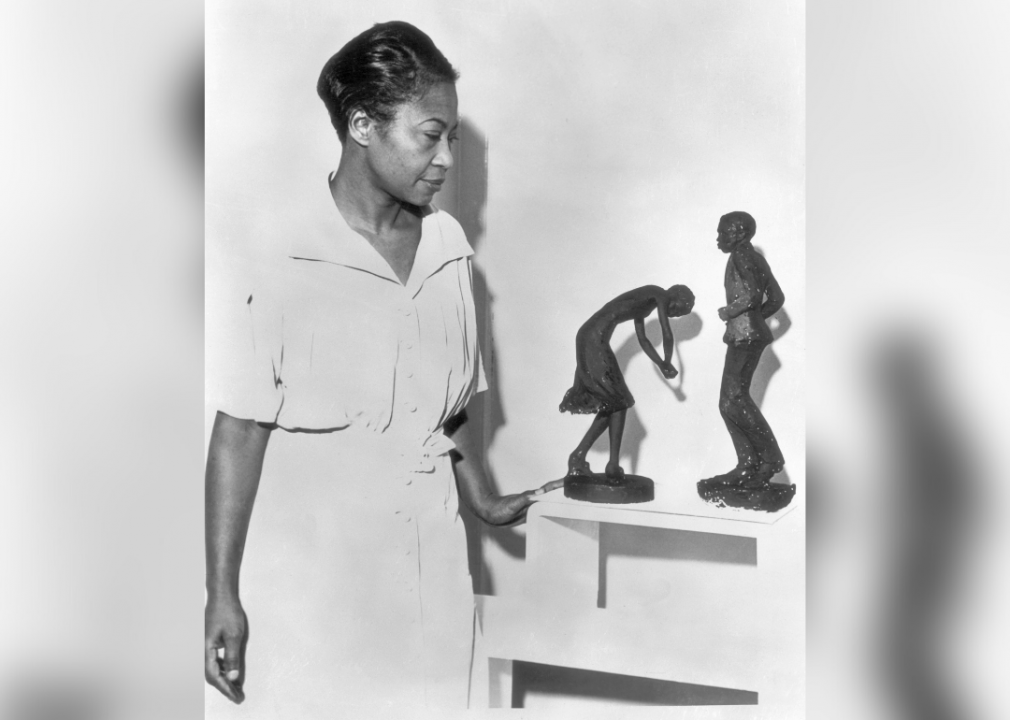
Bettmann // Getty Images
Augusta Savage
Through her sculptures, Augusta Savage transformed everyday moments in the lives of Black Americans into high art. A key figure of the Harlem Renaissance, Savage trained in Paris before returning to New York City, where she transformed her studio into a community art center; gave free lessons—other notable artists like Jacob Lawrence were students; and created commissioned projects like “Lift Every Voice and Sing,” which was made for the 1939 New York World’s Fair. Savage died in New York in 1962. She said that she preferred her legacy to be the artwork of the children she taught rather than anything she made with her own hands.
[Pictured: Augusta Savage viewing two of her sculptures in 1937.]
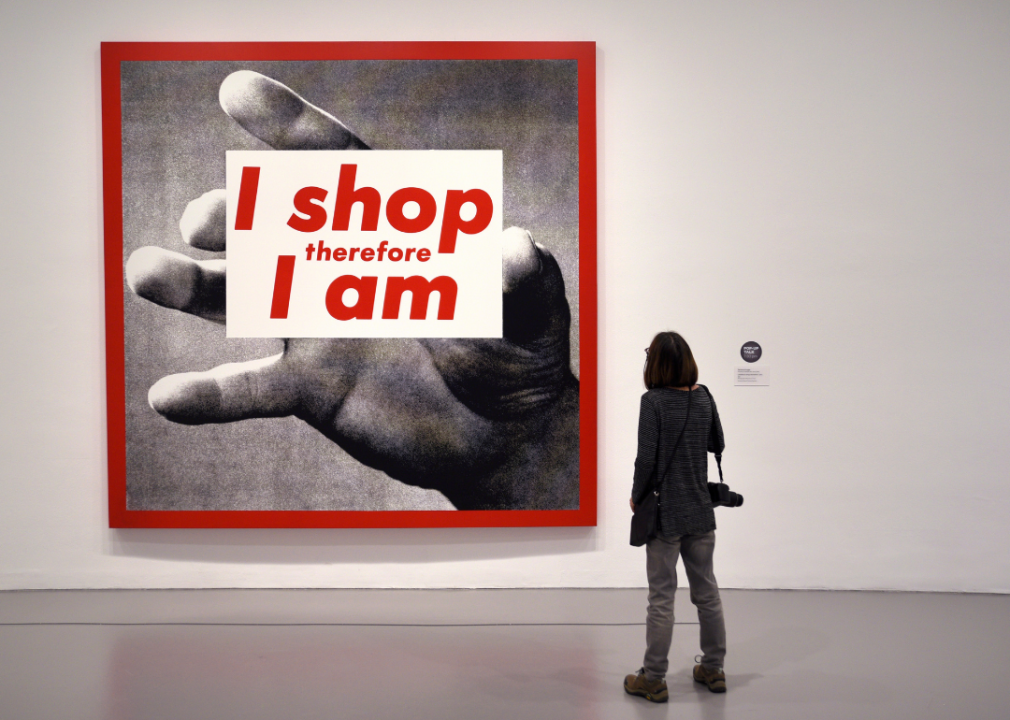
Robert Alexander // Getty Images
Barbara Kruger
Collagist Barbara Kruger got her start working in the design department at Condé Nast’s Mademoiselle magazine. In the mid-1970s, she began producing large-scale pieces that mixed found photographs with pithy sayings written in Futura Bold typeface, criticizing several cultural constructs like power, identity, gender, and sexuality. The artist splits her time between New York City and Los Angeles, and while she still occasionally produces new work, these days much of her energy is focused on teaching and writing.
[Pictured: A photographic silkscreen print by Barbara Kruger titled ‘I Shop Therefore I Am’ at the Hirshhorn Museum and Sculpture Garden on the National Mall in Washington D.C. in 2018.]
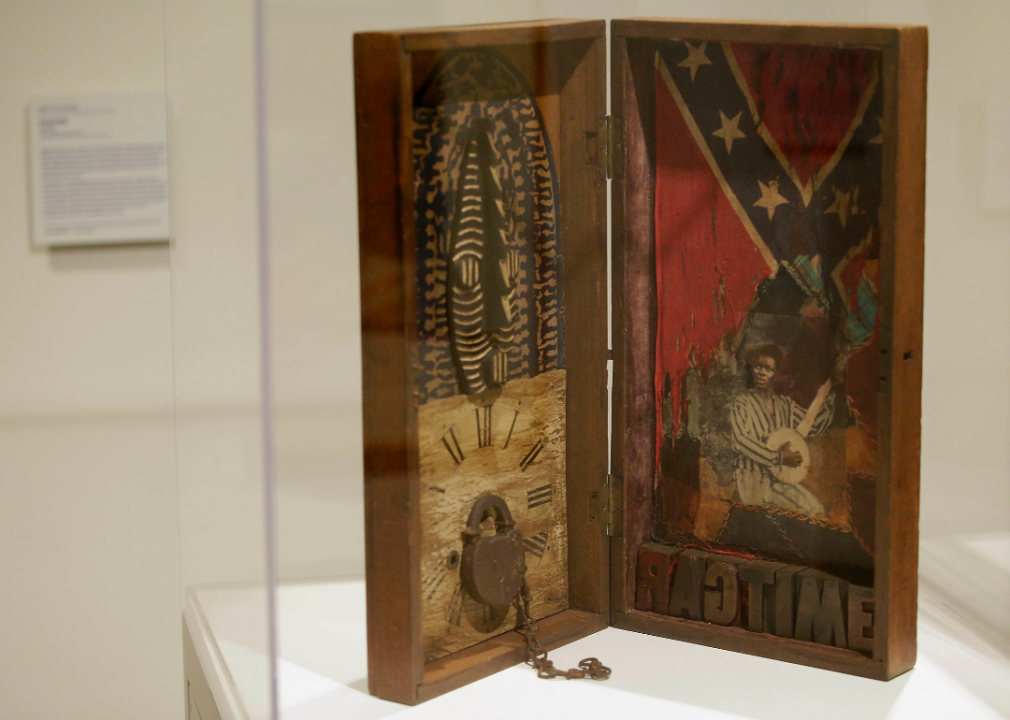
JOSHUA LOTT/AFP via Getty Images
Betye Saar
Political activist Angela Davis once credited Betye Saar’s work with launching the Black Women’s Movement. Saar primarily works in assemblage—though she’s an accomplished printmaker as well—challenging the stereotypes that exist around the intersection of race and femininity. Her most famous piece is titled “The Liberation of Aunt Jemima.” She currently lives in Los Angeles, and, despite her advanced age of 95, says she’s not yet done working.
[Pictured: Art work by Betye Saar is displayed at the Take A Stand Center at the Illinois Holocaust Museum & Education Center on Oct. 26, 2017, in Skokie, Illinois.]
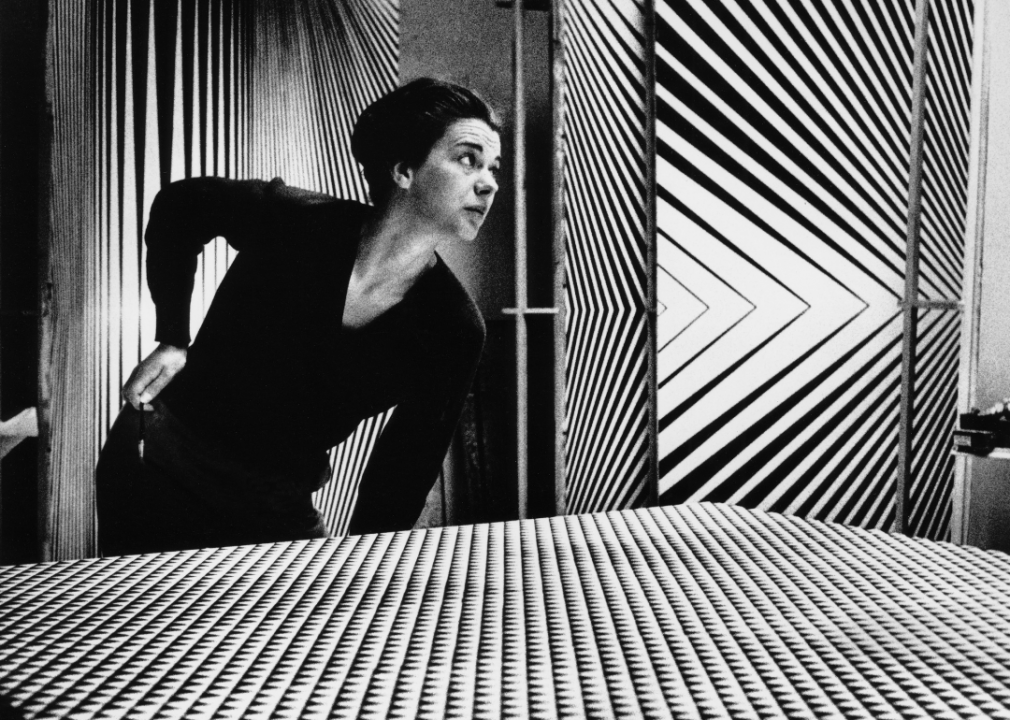
Romano Cagnoni // Getty Images
Bridget Riley
A figurehead of the Op Art movement, Bridget Riley has made some of the best-known optical illusion paintings in existence today. Her work combines clean lines, geometric precision, and color theory to create canvases and murals that attract, soothe, and confuse the viewer’s eye. Now in her 90s, Riley resides in London, where she enjoys semi-retirement.
[Pictured: Artist Bridget Riley in 1963.]
You may also like: ‘1984’ and 19 other dystopian novels that predicted the future
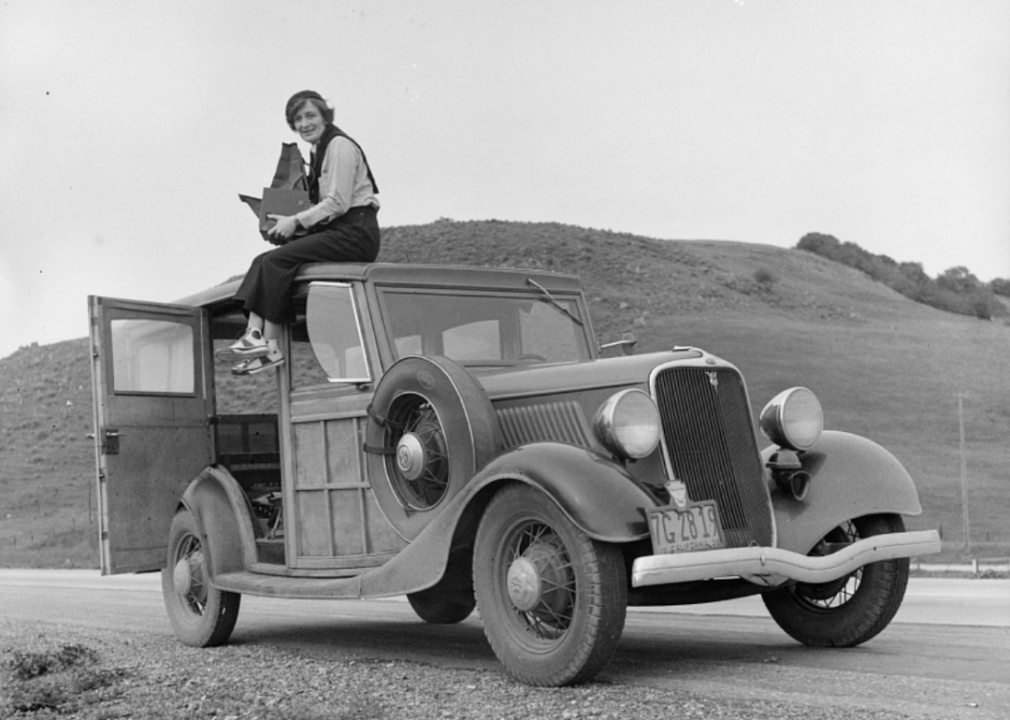
Library of Congress
Dorothea Lange
Documentary photography as we know it today wouldn’t exist without the work and influence of Dorothea Lange, a Depression-era photojournalist who is best known for her piercing and emotional photographs of migrant workers and families. Her photographs, while incredibly intimate, manage to tell universal stories of struggle and pain, which imbibe them with a timeless quality. Lange died of esophageal cancer in 1965, months before a retrospective of her work debuted at the Museum of Modern Art.
[Pictured: Dorothea Lange in 1936 in California.]
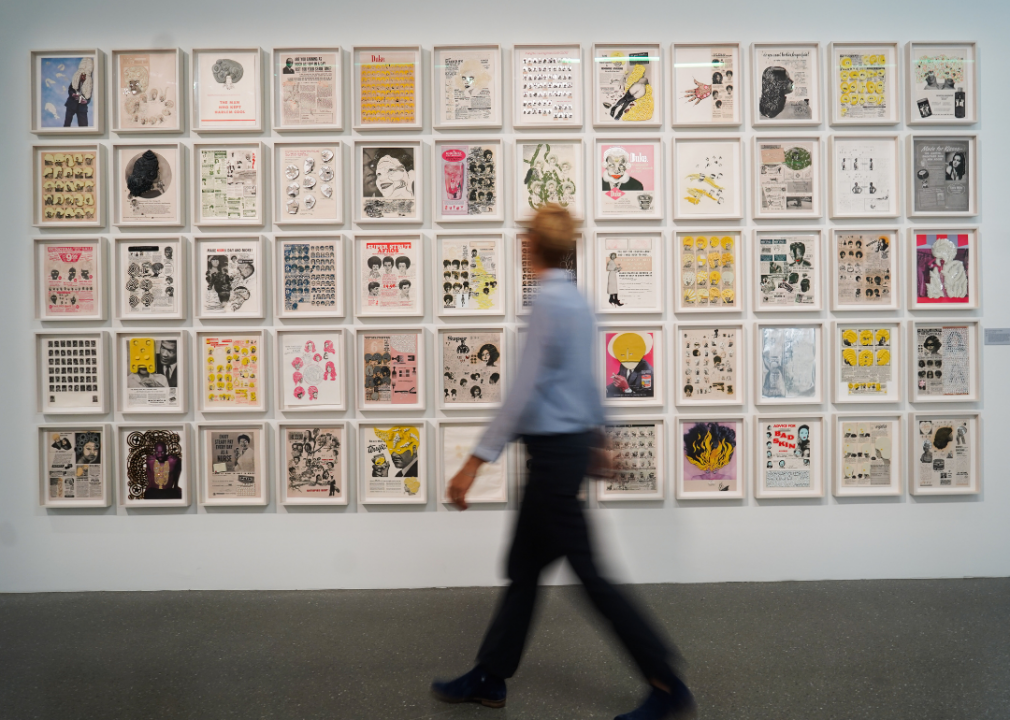
Jörg Carstensen/picture alliance via Getty Images
Ellen Gallagher
Finding her footing in the art world at the close of the 20th century, Ellen Gallagher comments on issues of race and gender through her multimedia work. In particular, she points out how these two issues have long been suppressed and invalidated by the media, and how this has shaped American history. Only in her mid-50s, Gallagher works and lives in both New York City and Rotterdam, Netherlands.
[Pictured: Works by Ellen Gallagher at the Kunstforum Palais Populaire in Berlin, Germany on Sept. 27, 2018.]
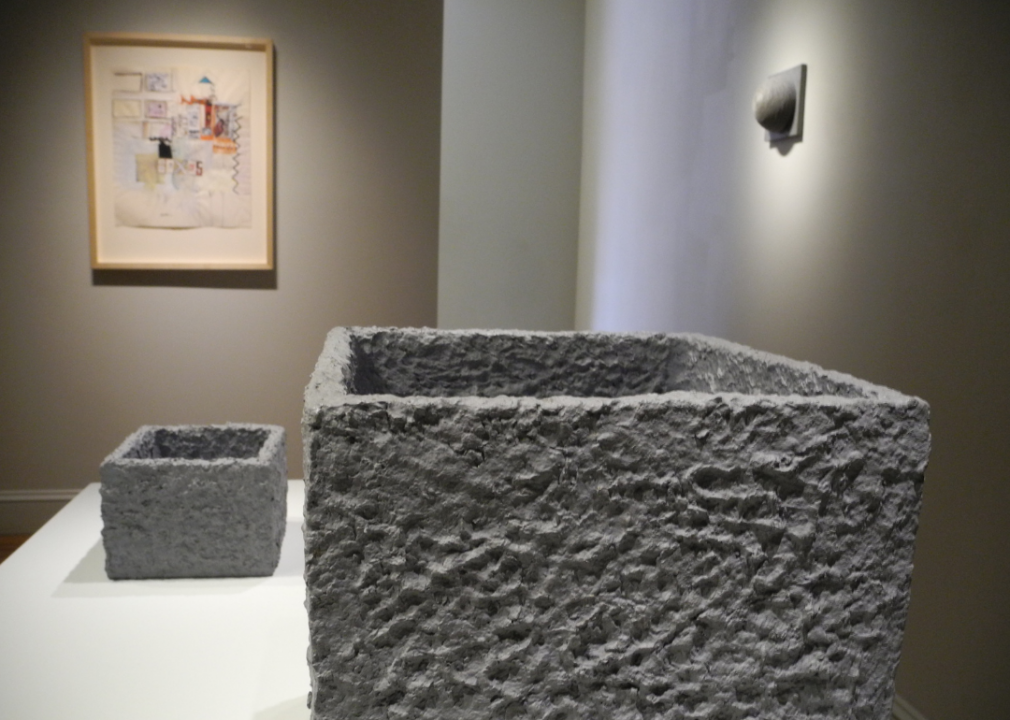
Johannes Schmitt-Tegge/picture alliance via Getty Images
Eva Hesse
Although her career only lasted for a decade, sculptor Eva Hesse certainly made her mark on the art world, ushering in the post-minimal art movement in the ’60s. Her pieces are typically made of found materials like latex, fiberglass, plastic, and string, and often address women’s issues, albeit in an apolitical way. The Jewish artist fled Germany as a child during the rise of Nazism and died in 1970 in her adopted hometown of New York City at age 34 of a brain tumor.
[Pictured: Sculptures by German-born artist Eva Hesse at the exhibition “Arrows and Boxes, Repeated” at the Craig F. Starr Gallery in New York in 2018.]
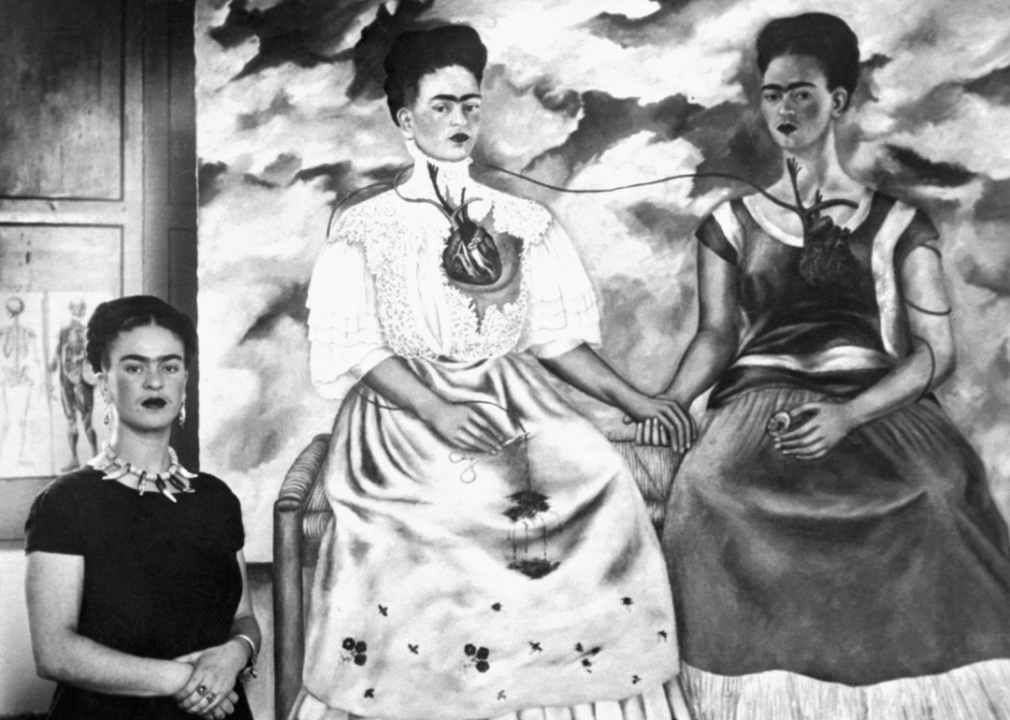
Bettmann // Getty Images
Frida Kahlo
Surrealist painter Frida Kahlo is one of the few female artists to be known worldwide. Of the 200 works she produced, many are self-portraits, or are at least autobiographical, and explore questions of gender, identity, class, and race. In 1954—after suffering from ill-health for years following a bus accident in 1925—Kahlo died either from a pulmonary embolism, as was publicly reported, or from suicide, which has long been believed to be her real cause of death.
[Pictured: Frida Kahlo with self portrait entitled “Me Twice” on Oct. 24, 1939.]
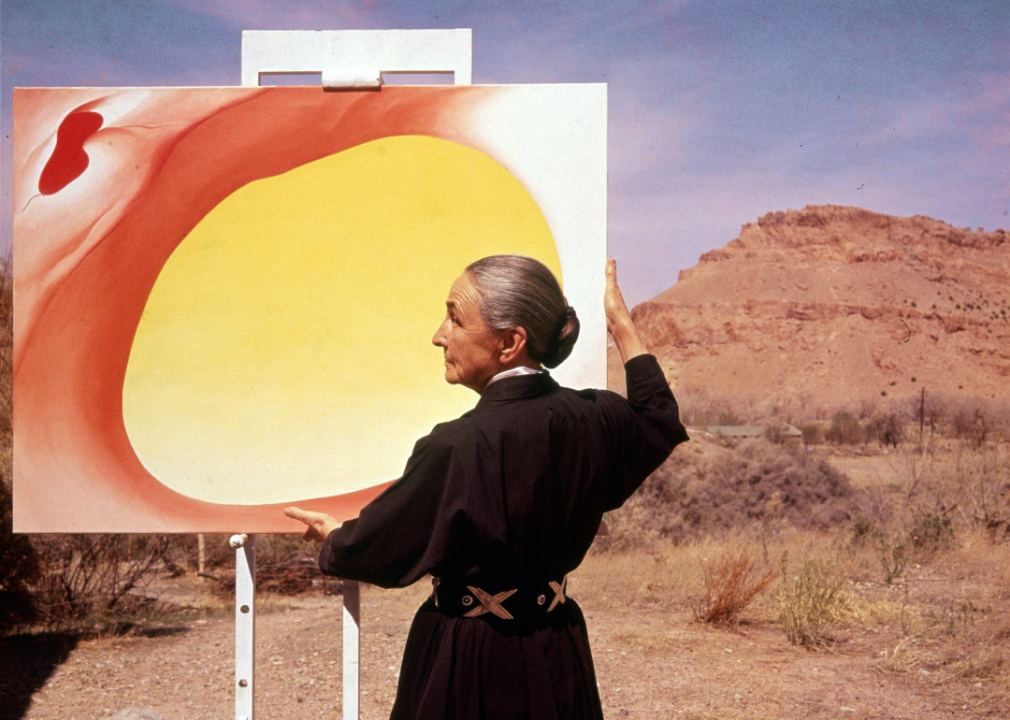
Tony Vaccaro // Getty Images
Georgia O’Keeffe
What do flowers, New York City skyscrapers, and New Mexico landscapes all have in common? They’re the most common subjects of Georgia O’Keeffe’s paintings. Often called “the mother of American modernism,” O’Keeffe literally changed the landscape of American art over the course of her 80-year career. In 1986, at the age of 98, she died in Sante Fe, New Mexico.
[Pictured: Georgia O’Keefe stands at an easel outdoors, adjusting a canvas from her ‘Pelvis Series- Red With Yellow,’ Albuquerque, New Mexico, 1960.]
You may also like: 100 of the best thriller novels of all time
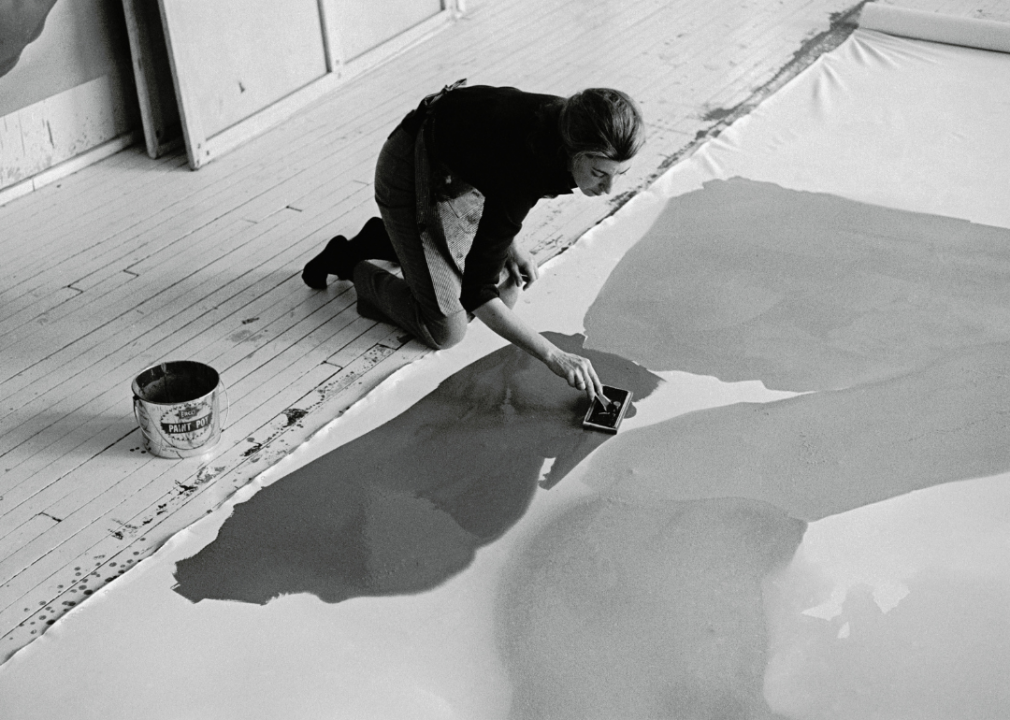
Ernst Haas // Getty Images
Helen Frankenthaler
When she died in 2011, Helen Frankenthaler’s obituary read that she had helped shape a movement. It wasn’t an exaggeration. An abstract expressionist, Frankenthaler produced consistently evolving works for over six decades, though her most notable works are in the color field style, which she essentially invented.
[Pictured: Abstract expressionist artist Helen Frankenthaler at work on a large piece, 1969.]
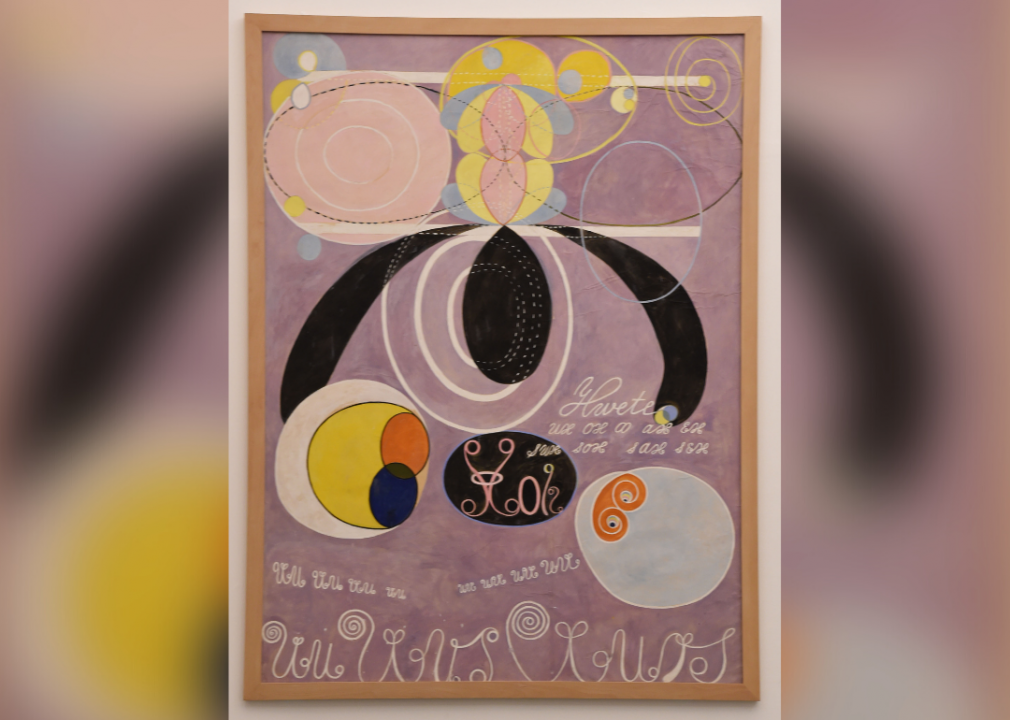
David M. Benett/Getty Images for Serpentine Galleries
Hilma af Klint
Considered an originator of abstract art, Hilma af Klint was painting in the nonrepresentative manner years before her male counterparts, like Piet Mondarin and Wassily Kandinsky, made it universally known. Born in Sweden in 1862, af Klint was obsessed with spiritism, and, for at least 10 years, regularly led a group of female artists in seances attempting to contact “the High Masters.” Her work can best be understood through this lens—as a way to explore and represent complex spiritual ideas. In 1944, she died as a result of a traffic accident, having only exhibited her work a handful of times.
[Pictured: Hilma Af Klint Exhibition At Serpentine Gallery on March 2, 2016 in London, England.]
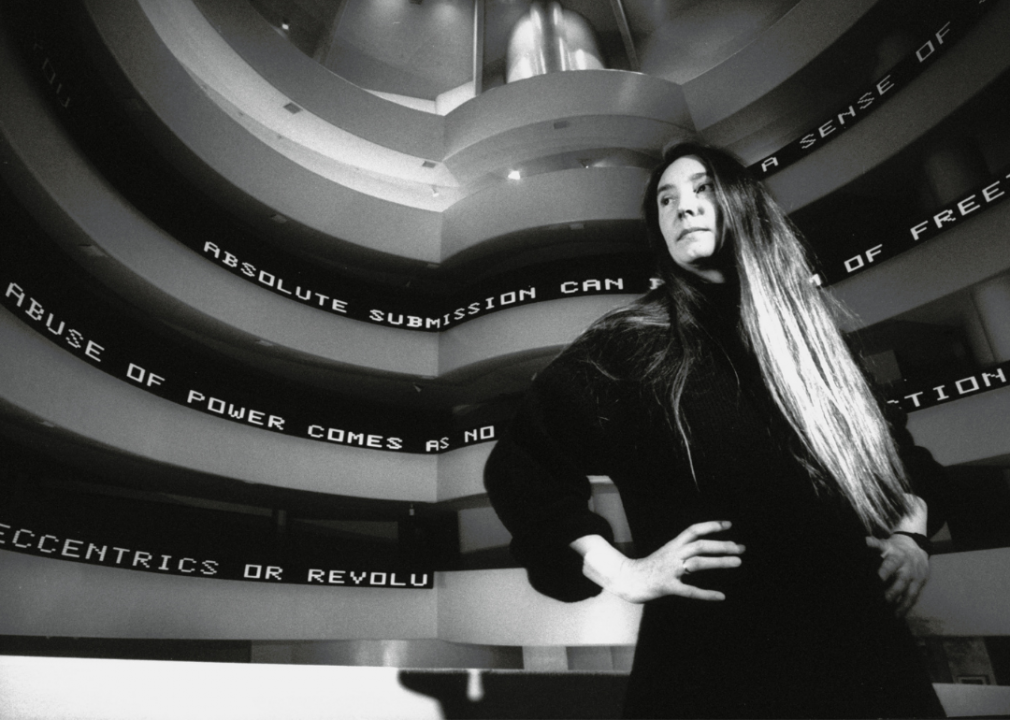
Marianne Barcellona // Getty Images
Jenny Holzer
Best categorized as a neo-conceptual artist, Jenny Holzer makes large text-based works such as posters, electronic signs, and engraved marble benches. A part of the feminist art movement and a member of the artists’ group Collaborative Projects, Holzer has participated in a number of renegade art shows, like the famous Times Square Show, that aim to democratize art. She currently lives and works in New York, though her output has slowed dramatically in recent years.
[Pictured: Artist Jenny Holzer standing in front of her installation at the Guggenheim Museum in New York January 1990.]
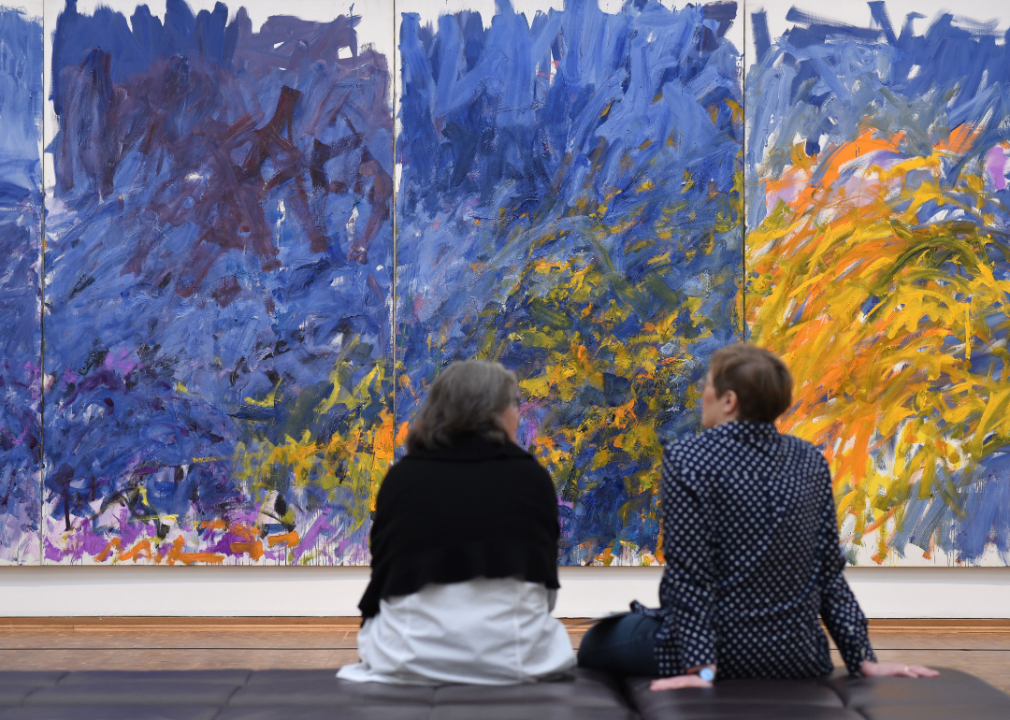
Henning Kaiser/picture alliance via Getty Images
Joan Mitchell
In the latter half of the 20th century, the New York School of artists turned out a number of important and influential visual creators. Among them was Joan Mitchell. An abstract expressionist, Mitchell once said that her colorful work, “My paintings repeat a feeling about Lake Michigan, or water, or fields … It’s more like a poem … and that’s what I want to paint.” One of the few famous female artists of her era and in her genre, Mitchell died of lung cancer in Paris in 1992.
[Pictured: The painting ‘Edrita Fried 1981’ by Joan Mitchell hangs in the exhibition ‘Joan Mitchell. Retrospective. Her Life and Paintings.’ in the Museum Ludwig in Cologne, Germany, November 2015.]
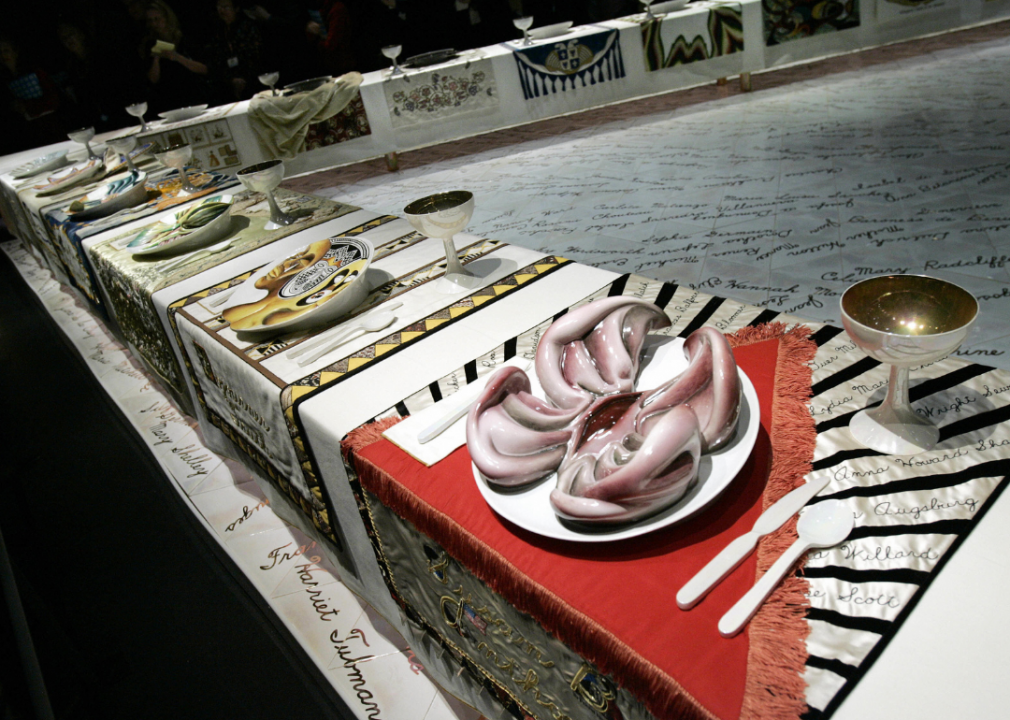
STAN HONDA/AFP via Getty Images
Judy Chicago
Founder of the first feminist art program in the United States, Judy Chicago uses her large installations to spark conversations about gender politics and women’s place in society. Her multimedia works are often collaborative—her most famous piece, “The Dinner Party,” was made with the help of 100 volunteers—and are typically images of birth or creation. She currently resides in New Mexico and continues to work alongside her husband Donald Woodman.
[Pictured: Detail of “The Dinner Party” (1979) by American artist Judy Chicago, in 2007, in the Elizabeth A. Sackler Center for Feminist Art at the Brooklyn Museum in New York.]
You may also like: Books that have sold over 50 million copies
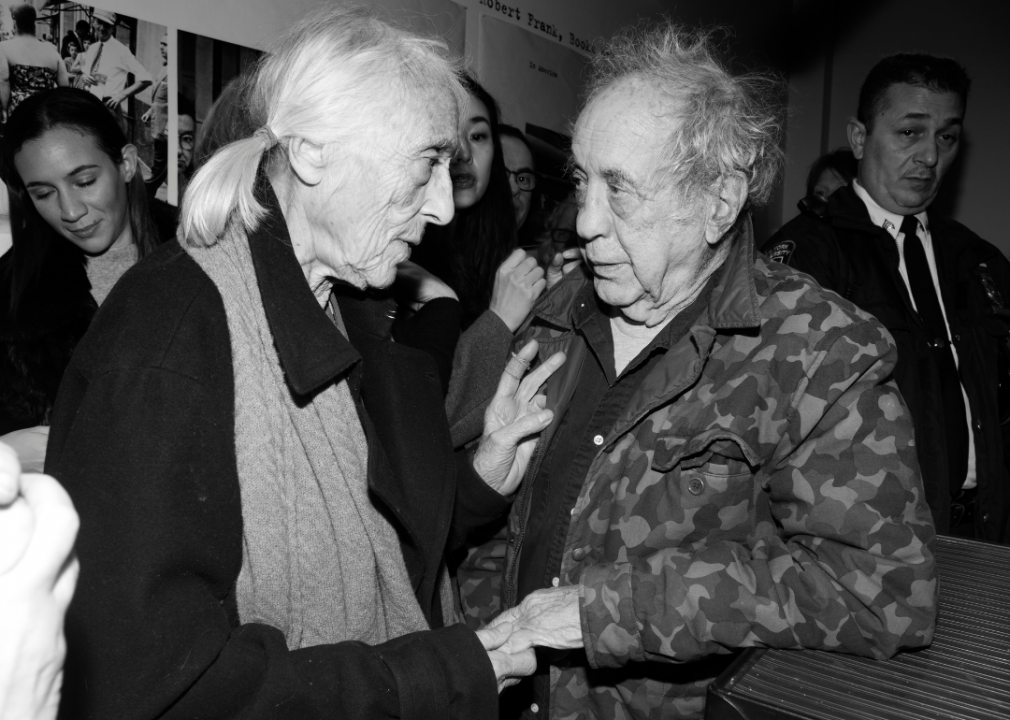
Taylor Hill // Getty Images
June Leaf
Family, childhood, and true love are the major themes that inspire June Leaf’s drawings, paintings, and sculptures. An abstract artist, her works are often allegorical in nature and feature a recurring cast of characters that have been in development since the 1950s. Leaf was a member of the Monster Roster, a group of 1940s Chicago artists. She also spent years working and studying in Paris, before settling in New York City and then Nova Scotia, where she remains today.
[Pictured: Sculptor June Leaf and photographer Robert Frank attend an opening at The Tisch Galleries on Jan. 28, 2016 in New York City.]
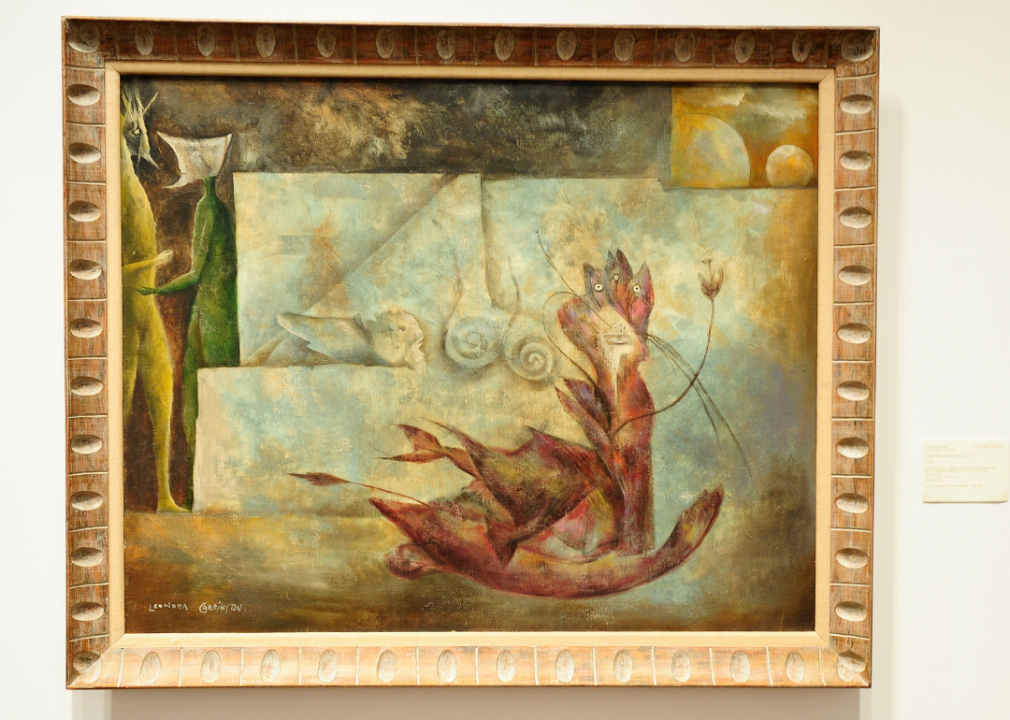
EMMANUEL DUNAND/AFP via Getty Images
Leonora Carrington
Surreal is the best word to describe Leonora Carrington’s work. One of the last members of the surrealist movement, and one of the few women ever seriously involved in it, the Mexican-British artist primarily painted narrative landscapes. In 2011, she died of complications from pneumonia in Mexico.
[Pictured: “El gato” by Leonora Carrington is on display during a preview of Christie’s Latin American Art auctions, May 24, 2010 in New York. ]
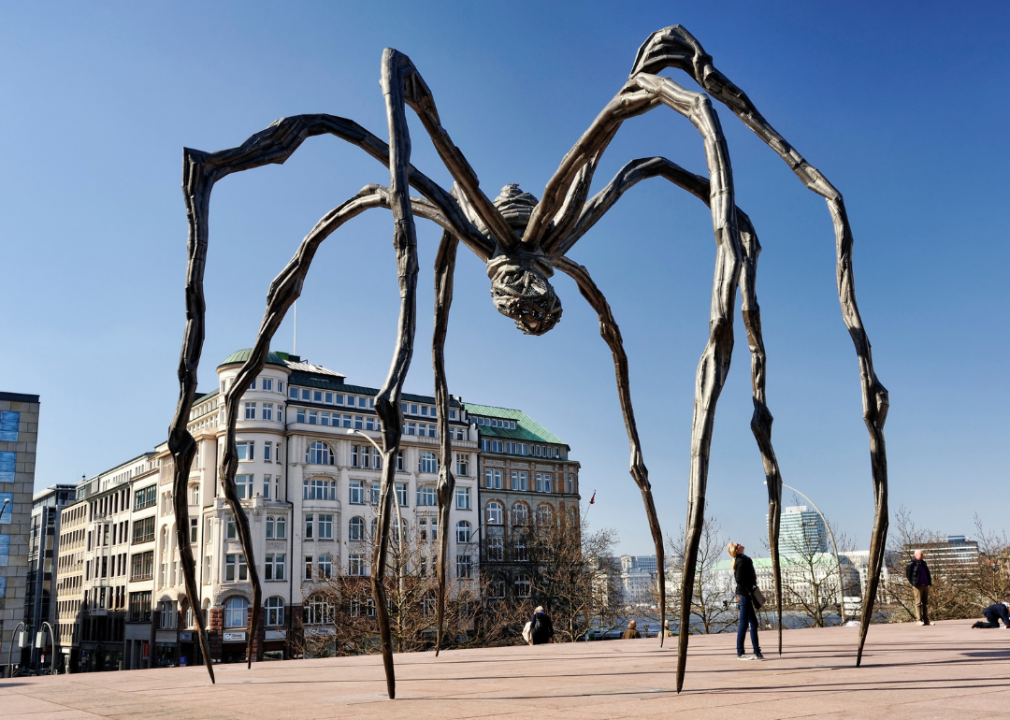
Christian Ohde/McPhoto/ullstein bild via Getty Images
Louise Bourgeois
French-American artist Louise Bourgeois doesn’t fit cleanly into any specific category. Best known for her oversized sculptures and installations—like the 8-meter spider “Maman”—she also produced paintings and prints that encompass the genres of abstract expressionism, surrealism, and feminist art. In 2010, she died of heart failure in New York City.
[Pictured: “Maman” pictured in Hamburg, Germany in March 2012.]
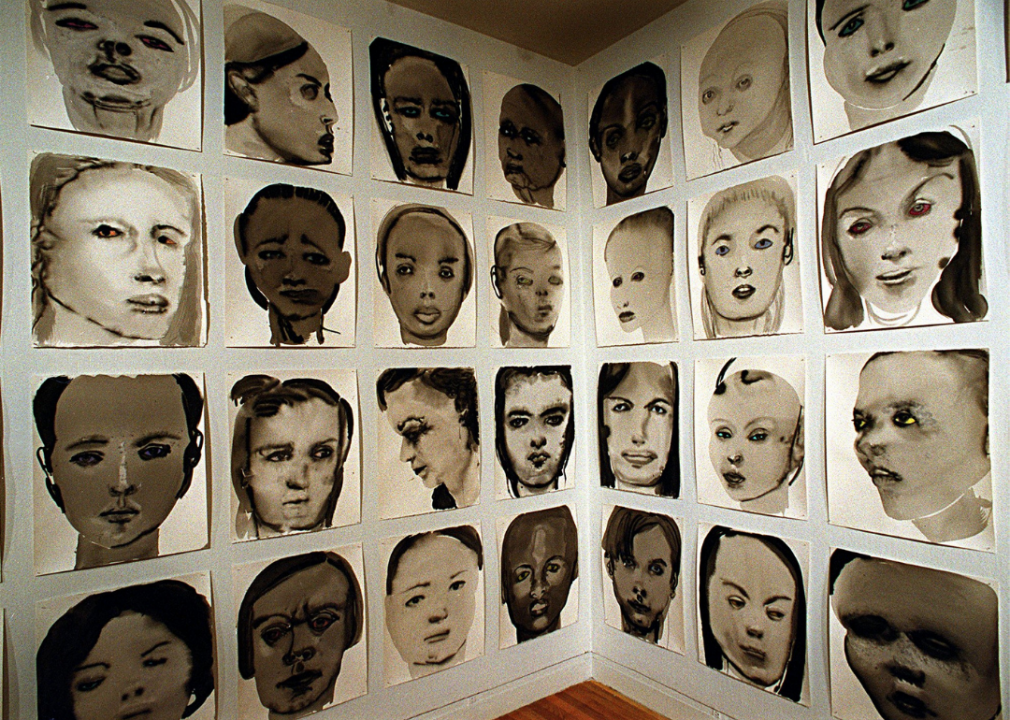
David L Ryan/The Boston Globe via Getty Images
Marlene Dumas
When Marlene Dumas sold her painting “The Visitor” for $4.2 million in 2015 she broke the record for most expensive work sold by a living artist. Her work, which consists primarily of portraits, is a study in duality—an extension of her own reality of being a South African artist living in the Netherlands—and of what it means to live in our physical bodies. Still active, Dumas lives in Amsterdam.
[Pictured: On display at the Institute Of Contemporary Art in Boston, “One Hundred Models” by Marlene Dumas, 1994. ]
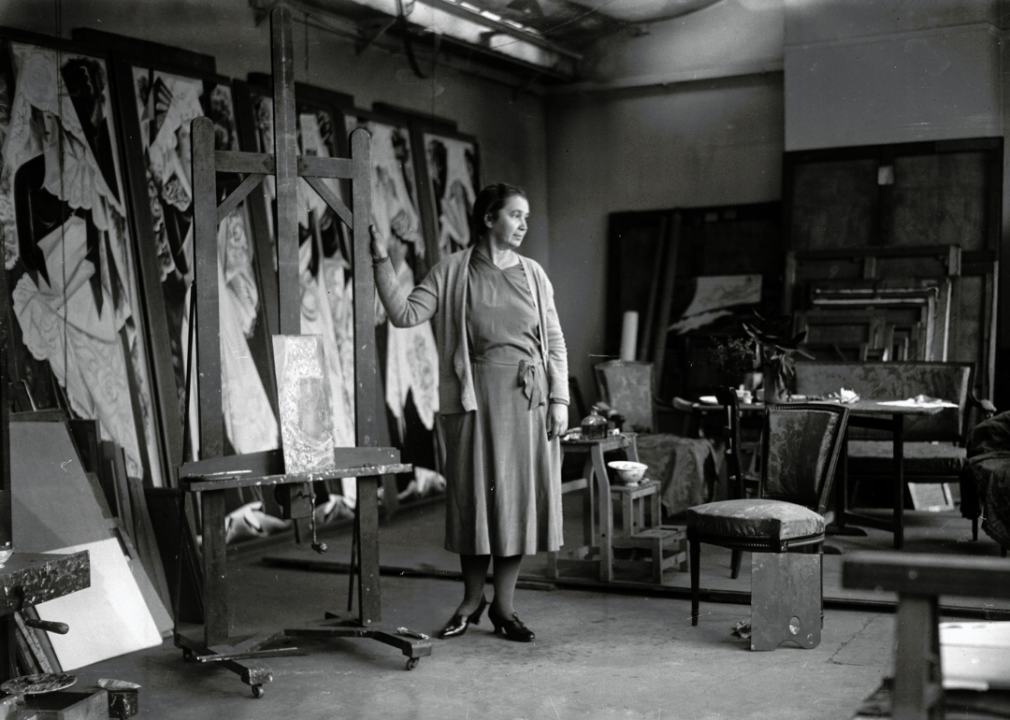
Roger Viollet via Getty Images/Roger Viollet via Getty Images
Natalia Goncharova
An integral part of the avant-garde movement, Natalia Goncharova developed a new form of abstract painting called rayonism in 1912. The following year, she became the first woman in her native country of Russia to have a full-scale retrospective, which featured more than 700 works of art in styles ranging from cubism to abstract to folk art. A truly radical artist—her shows were frequently raided by police for so-called pornographic images and anti-religious works— she died in Paris in 1962, suffering from severe arthritis and completely impoverished.
[Pictured: Natalia Goncharova (1881-1962), Russian painter, sculptor and decorator, in her Parisian studio circa 1920.]
You may also like: Can you solve these real ‘Jeopardy!’ clues about art?
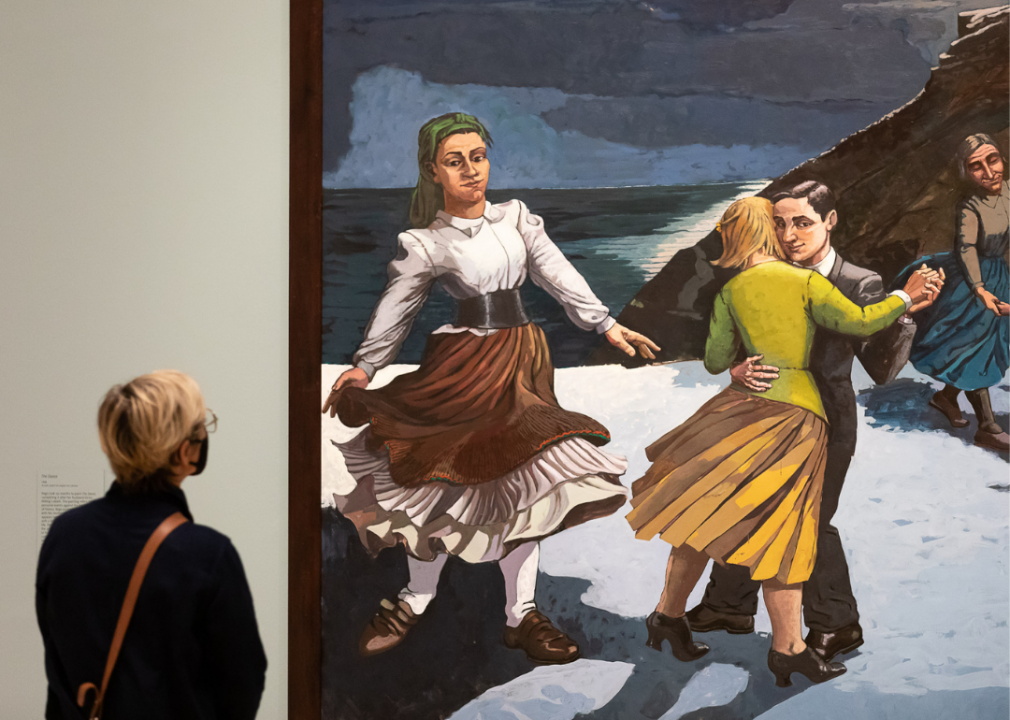
Tim P. Whitby // Getty Images
Paula Rego
For the past seven decades, Paula Rego, an often underrated British-Portuguese artist, has created a body of work based on fairy tales and folk stories. Despite their seemingly sweet subject matter, the paintings carry some serious weight, relaying timely political messages and conveying heavier emotions like rage and pain. Now in her mid-80s, Rego lives in London, and though she is too frail to paint, she was able to enjoy a retrospective of her work that went up at the Tate Museum in early 2021.
[Pictured: The U.K.’s largest ever retrospective dedicated to Portuguese visual artist Paula Rego at the Tate Britain opens on July 5, 2021 in London, England.]
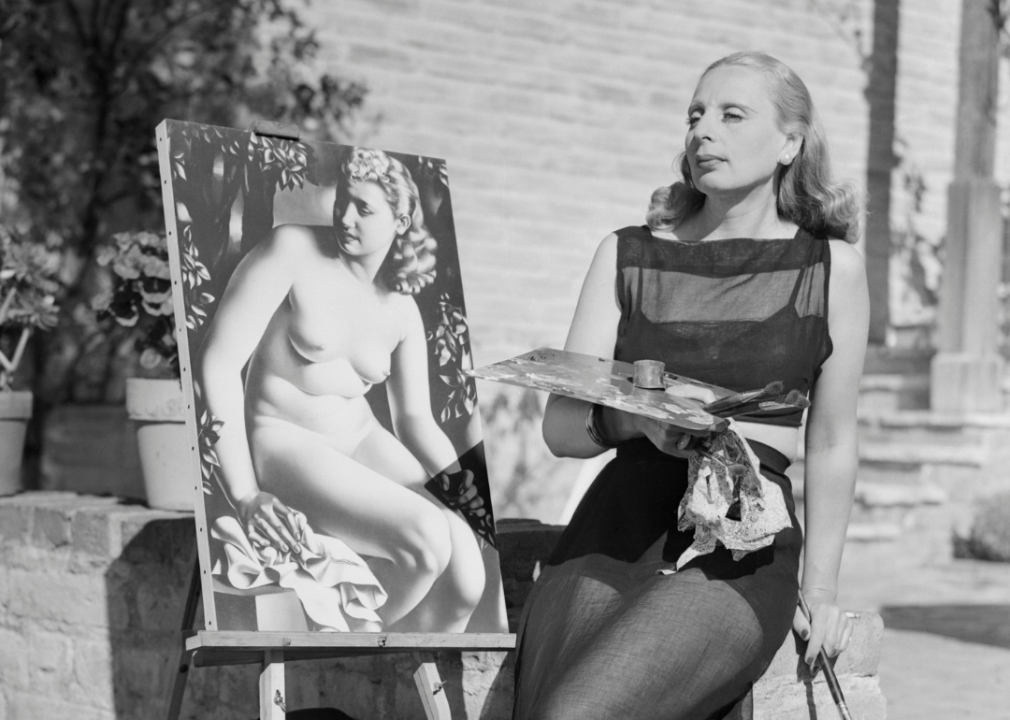
Bettmann // Getty Images
Tamara de Lempicka
The “baroness with a paintbrush,” Tamara de Lempicka was a Polish artist who is known for her portraits of the era’s elite. Her pictures, which are done in a blend of cubism and neoclassical styles, ooze with sensuality and are, to this day, incredibly chic. Over the years, many of them have been reproduced in fashion magazines such as Harper’s Bazaar. She fled Europe for the United States just before the start of World War II. In 1980, de Lempicka died in Mexico.
[Pictured: Tamara de Lempicka at her easel.]
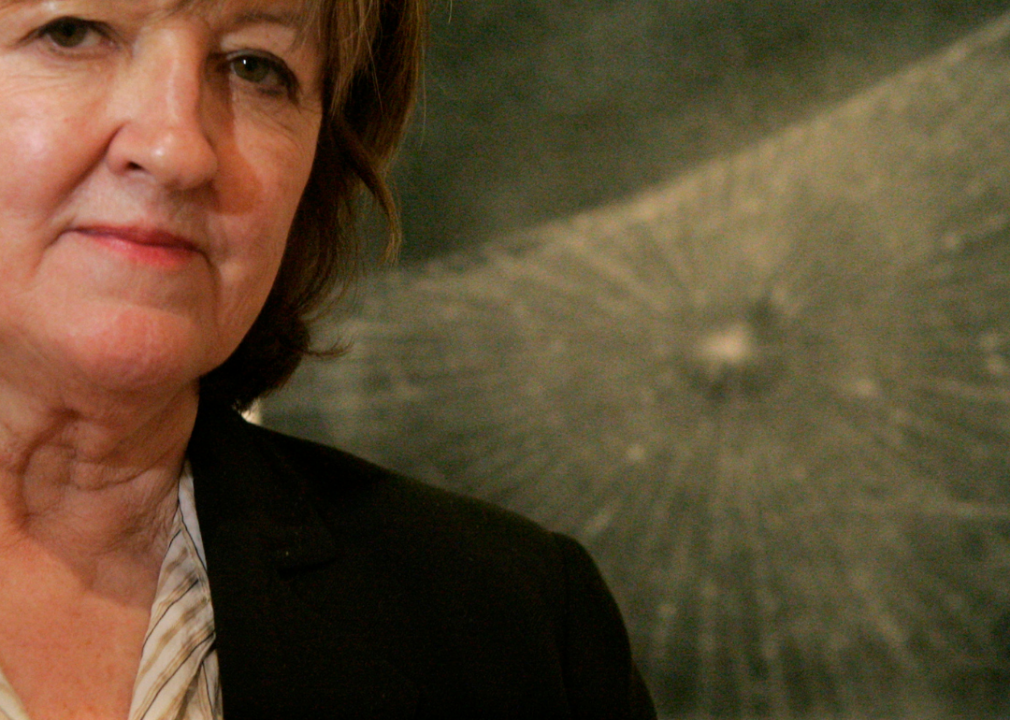
Lawrence K. Ho/Los Angeles Times via Getty Images
Vija Celmins
The New York Times said it best when it called Vija Celmins’ work “precise, painstakingly wrought illusions of reality.” Her graphite and paper drawings of nature—including the ocean, the night sky, spiderwebs, and rocks—are highly detailed, photorealistic works that are almost overwhelming in scope, forcing the viewer to really slow down and patiently take them in. Born in Latvia, Celmins now resides in New York and remains active.
[Pictured: Artist Vija Celmins with her work in an exhibition at the Hammer Museum in West LA in January 2007.]
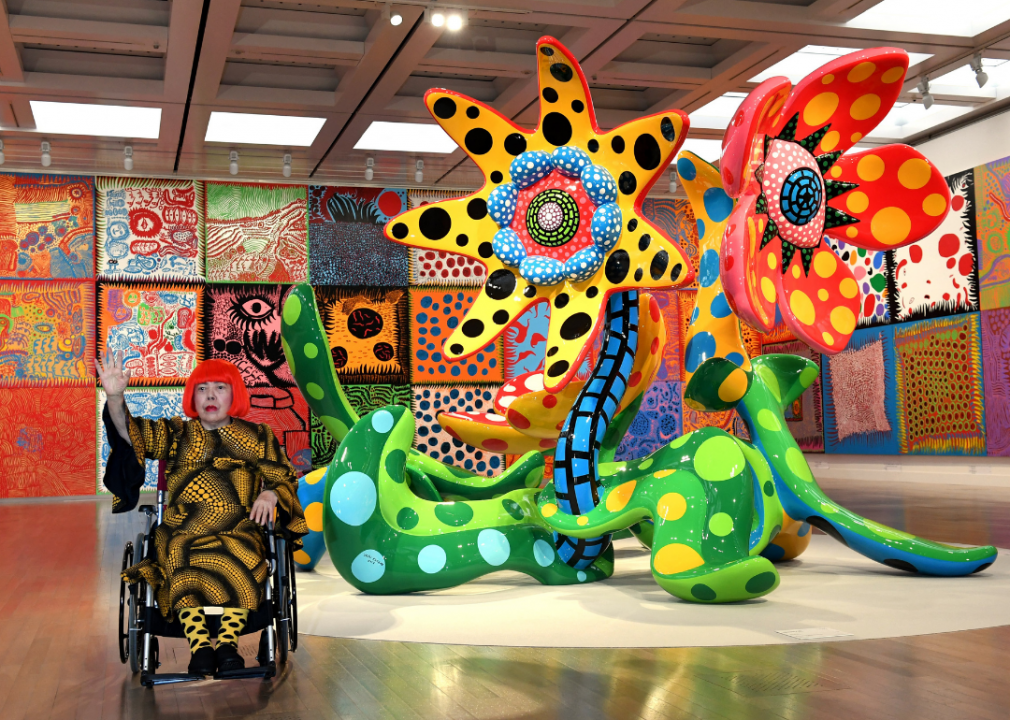
TOSHIFUMI KITAMURA/AFP via Getty Images
Yayoi Kusama
Once the center of New York City’s avant-garde and pop art scenes, Yayoi Kusama is best known for her use of polka dots and her intense, large-scale environments. Born in Japan, Kusama spent her most productive years in the United States, where she used everything from the naked human body to the inside of a room as canvases. In the early ’70s, Kusama returned to her home country, where she has voluntarily lived in a psychiatric hospital for the past four decades, withdrawing almost completely from society even as her installations and shows have become increasingly popular due to social media apps.
[Pictured: Yayoi Kusama beside her 2016 production titled “Flowers that Bloom Tomorrow” at her exhibition titled “My Eternal Soul” at the National Art Center in Tokyo on Feb. 21, 2017.]
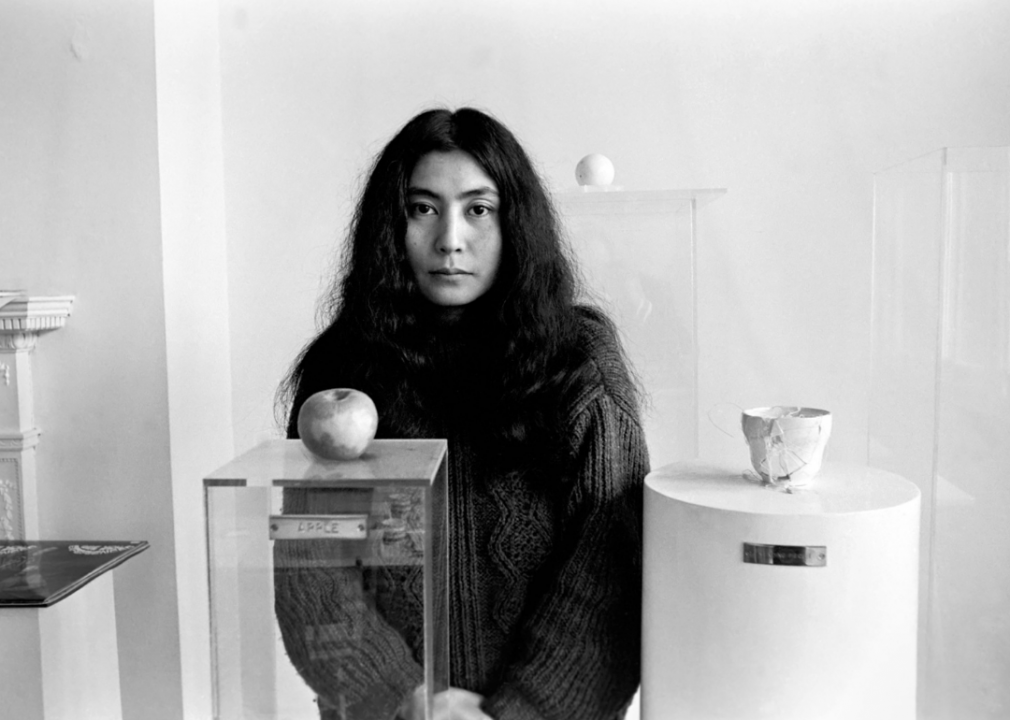
WATFORD/Mirrorpix via Getty Images
Yoko Ono
Yoko Ono’s art, whether performance or visual, acts as a two-way mirror, throwing the viewers’ reactions back at them and revealing some deep inner truths about her audience. Involved in New York’s avant-garde scene, she both collaborated with other artists and created pieces of her own, like her famous 1964 “Cut Piece,” hoping to unsettle and inspire those who engaged with it. Now in her late 80s and in failing health, Ono still lives in New York City in the Dakota apartment she once famously shared with her husband John Lennon.
[Pictured: Artist and singer Yoko Ono photographed in London 1967.]
You may also like: 50 famous paintings and the stories behind them